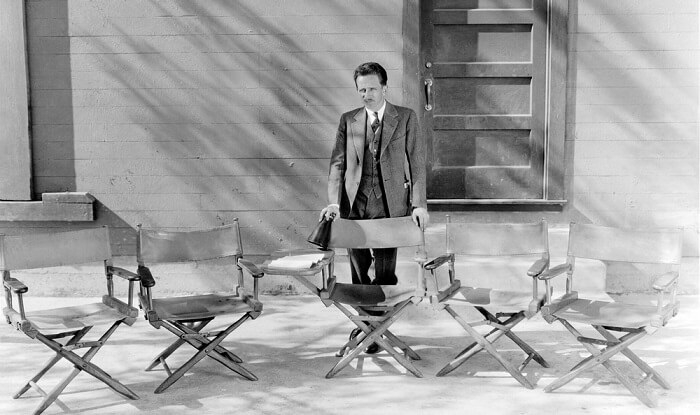If you are content with going through your career doing only stage work, using head shots, your resume, and the audition itself to present your talent is usually the norm. However, if you would like to expand your horizons into television and film, that simply may not be enough. That is where putting together an acting portfolio comes into play. In its most basic definition, an acting portfolio includes your head shot and resume as well as a reel.
While many directors would like to see that you do have some experience, even big name stars had to start somewhere and at some point did not have much experience either. Putting together a good portfolio can still help you land that first role. How do you put together this acting portfolio if you have no experience? This article will help give you steps to do just that.

8 Steps to Build Your Flawless Acting Portfolio
1. Get a Professional Head Shot
A head shot is a professionally done picture that represents you as your type. It is your introduction to directors and talent scouts. Roles need people who fit and casting directors are looking for that specific type to fit the role. Thus, you can touch up some blemishes here and there. But do not go overboard with the makeup or airbrushing. You want to look like you.
Also putting up the money to get them done professionally will make you look dedicated and serious about your career. Remember to update your head shot if something about your appearance changes substantially and just every few years as you age.
2. Put Together Details for Your Resume
As with any job, a resume can help highlight your skills and present your abilities to the casting director. However, even though a business resume and an acting resume serve the same function, they are quite different. Thus, you do not want to try and squeeze your acting resume within a business structure. Here is a list of information that you should include:
- Your name: This is what you will be known as in the industry. So, choose wisely and build your notoriety and reputation around it. This can be your real name or if you prefer, a stage name.
- List any affiliations to unions that you are a member of. This is especially important as some casting calls will specifically be looking for union members while others only want to work with amateurs.
- Current contact information.
- A list of roles you played: Also include where you performed them and for what venue (television, stage, romantic film, etc.).
- A list of professional training: This can include different acting classes for different types of acting such as improve or regular acting. You can include any voice, singing, and dialect lessons. Do not forget physical lessons such as different types of dance, stunt work, fighting styles.
- A skill list: Yes you want to include things like singing and dancing. But focus on mentioning special and unique skills too. These will help you stand out and makes your resume interesting. So if you can yodel, include it. Can you put on or take of weight for a role easily? Include it.
- Do not forget to add your personal information: Your basics like age, weight, eye and hair color, and height can all be useful information to a casting director looking to fill a specific role.

3. Edit the Docs to Look Professional
The more professionally you present yourself in your acting portfolio, the better. Thus, when you are putting together your resume you will want to use a clean and readable font. Steer clear of any fun fonts like curly Q’s which are very unprofessional looking. This is not the right way to be noticed. Try to keep your resume to one page using only pertinent information so that you can have it printed or adhered to the back of your head shot.
Like any other resume, someone who looks it over will want to find necessary information fast and does not want to have to sift through 4 pages that droll on and on. If they like what they are seeing, they will contact you to find out more. That is when you can go into detail and expound on what is on your resume.
4. Include Basic Contact Info
Your resume in your acting portfolio will contain your basic contact information. Be sure to include an email address. It is a good idea to have a separate email address that is specifically for your acting career. We suggest that you use your full name in your address so that there is no question that it is you the director is contacting.
This will also eliminate the possibility of losing the message to your spam folder or accidentally deleting it with some junk mail. It will give you the opportunity to quickly receive and respond to the message which will make you look professional.
5. Add a Well-Written Cover Letter
If you choose to include a cover letter, be sure to keep it short and sweet. Casting directors are very busy and do not want to have to read through a novel of a cover page. In fact, it is likely they won’t even bother if it is too long. This is your chance to be honest about your lack of experience while reiterating your desire to learn. You can highlight a few pertinent details such as classes you have taken or roles you have done. However, just keep it simple and not detailed since your resume will also likely include this information.
Take the time to sincerely say why you chose acting as your career but do not get too sappy. You can also mention that you are more than willing to accept walk-on roles and small bit parts so that you can gain more experience.
6. Build an Online Presence
Much of the world is media and social media driven. Be proactive and take the time to set up, or have someone set up a website for you. Include the URL on your resume or in the cover letter so that it gives the casting director the opportunity to see more if they are interested. In fact, it may peak their curiosity and give you a chance to show more of your skills without having to really put in any extra effort. On your site you can add more photos, more scene highlights that you could not include on your reel, as well as any other items you want to present.
This is also a good way to always have your info out there so that if scouts or agents are out looking they may come across you and give you some more exposure. Be sure to also include everything in your acting portfolio such as your head shot and resume. You can even create a printable PDF file and download of your reel so that a casting director or scout has an easy way to quickly grab your acting portfolio. Just be sure to take a good copy to give them when you meet.

7. Make a Eye-Catching Reel
With a reel you are going to want to really show off your talent range. Use different types of roles in different venues if you can. Have a professional editor cut the scenes to highlight your roles.
There should never be a question as to who in the scene is being featured. That should always be you. It is for your acting portfolio after all. Try to keep the reel fairly short. Ideally it should last no more than a few minutes so be picky about what you put in there.
8. Use Adequate Packaging
Many people opt for a simple large envelope to hold all of their acting portfolio.
- You may want to put a little flair into it and get a presentation folder.
- This folder may have a front pocket for your cover letter or a slide in.
- It may also have a clear sleeve to display your head shot as well as your resume printed on the back.
- There could also be a slot to slip your reel in DVD form.
- It is a very professional way to present yourself and stand out from all of the brown envelopes.
If you do go the envelope route, be sure the envelope is large enough to easily get your head shot out without a struggle. Also, do not lick it shut- use a small piece of tape to close it.
Wrapping Up
Every actor has to start from the ground up. This can make it difficult to know how to get an acting portfolio together and what you should include in it. Casting directors know that not every actor will have extensive experience. So do not be discouraged. Be sincere about your desire to learn and present yourself professionally and you may find that first acting role faster than you thought possible.
What have you found to be effective in a portfolio? Please feel free to leave any tips and experiences for other actors below.
Images from depositphotos.com.